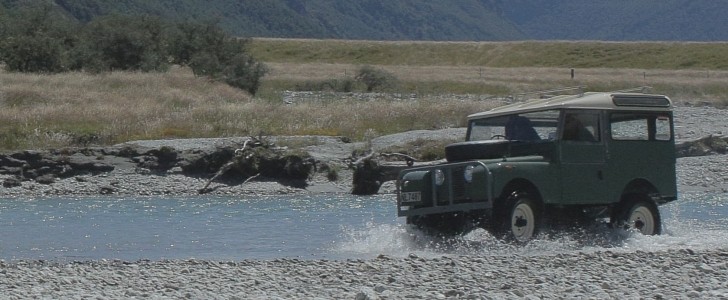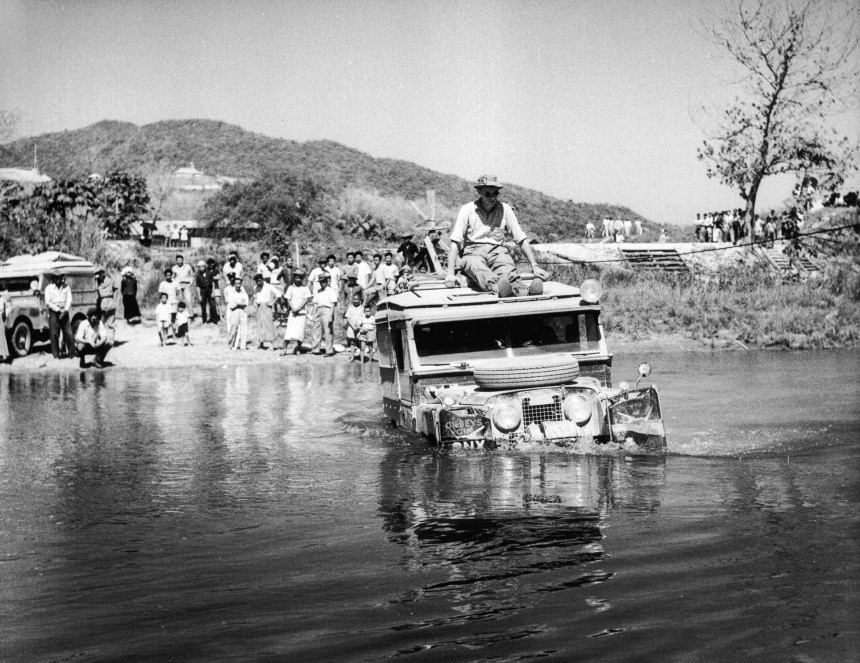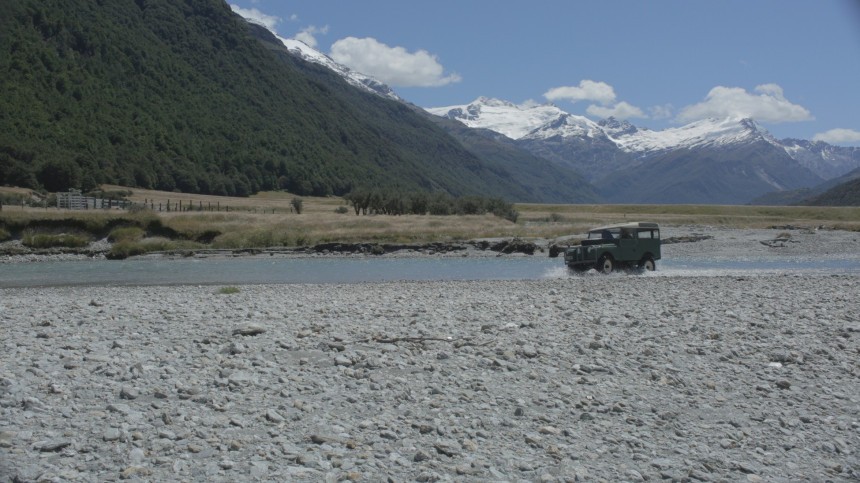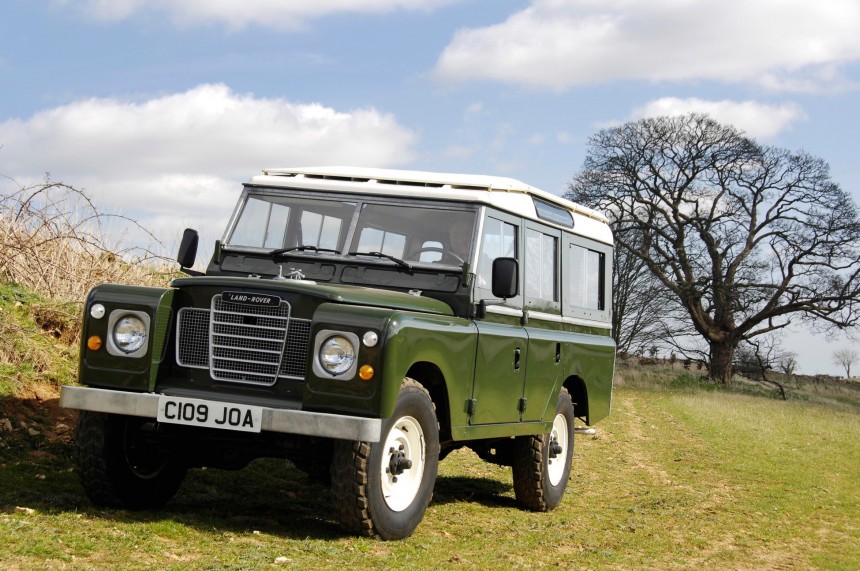Judging an old car by today's standards is worse than judging a book by its covers, and Land Rover is the perfect example for this. Especially when talking about the old Series models that saw the light of day back in 1948.
Back then, Europe was recovering after WWII, and Britain had to get back on track with its industry. The Rover Company was on the brink of extinction among other carmakers. Its factory in Coventry was bombed during the war, and production was moved to Solihull, near Birmingham, where the management tried to create a small, affordable vehicle. But it was too expensive to produce them.
Meanwhile, Maurice Wilks, Rover's chief engineer, had an American Willys Jeep, a leftover from the war. He enjoyed that car so much that he came up with the idea of producing a British version of it. Moreover, since the agricultural vehicles were in high demand, he proposed to the company's management a vehicle that could suit both purposes: a tractor and a family car.
The idea was good, and got the green light. Work on the project started in 1947 and, by 1948, the first prototype was ready: the Land Rover Series I. It was built on top of a Willys chassis, and fitted with an engine carried over from a Rover P3.
Steel was among the short-list of materials rationalized for rebuilding the British economy, and Wilks came up with a great idea. The aircraft factories still had aluminum in large quantities (previously needed for the Spitfire), and nobody wanted it. So, Rover made Series I from that. Moreover, there was an abundance of light-green paint leftover from the war, so the carmaker took that too.
The body panels were flat and barely bent into the corners, thus production cost was kept low. Its fenders were placed way in front of the radiator, so the vehicle had the engine compartment protected. Also, the headlights were installed inside the grille for the same reason.
While the initial project featured a center-mounted driver post, the final product had the driving post moved on the right side of the vehicle and accompanied by two other seats for passengers. In the back, there were two side-mounted, inward-facing benches. Under the hood, there was a small 1.6-liter gasoline engine. The gearbox featured a PTO (Power Take-Off), which allowed the mounting of agricultural machinery.
The first pre-production vehicle of the Series I was registered in January 1949 with the HUE 166 plates. That was the beginning of one of the most incredible vehicles ever made.
By 1950, the carmaker understood that the 1.6-liter engine was outdated, and introduced a 2.0-liter powerplant. It was not a beast, but since the car was light and featured a 4x4 transmission with a two-speed transfer case, it could conquer any terrain. Its 80" wheelbase was appropriate for the initial needs. Moreover, there were no taxes, since it was registered as an agricultural vehicle. Still, it had a mandatory maximum speed of just 30 mph (48 kph).
By 1957, the Series I grew and sported an 86" wheelbase, and a new, 2.0-liter diesel engine was installed. Yet, it was already evident that the Series I needed an upgrade. That came in 1958 with the Series II, which was built on a chassis with an 88" wheelbase for the SWB, and a 109" one for the LWB.
A special mention goes for the 1962 Land Rover Forward Control (FC), which was actually a COE (cab-over-engine) version of the Series IIA. This allowed for a bigger transport area, and was used by the army to transport troops or equipment. However, it didn't last too long, Rover producing less than 2,500 units. The FC version was resumed in 1966 based on the Series IIB vehicle with improved engines and drivetrains. Yet, it was not a highly successful model, but mainly purchased by authorities and armies.
With the Series II, Land Rover became a worldwide-known name. It started to assemble vehicles in Australia, South Africa, and Belgium. It became a trendy vehicle bought by farmers, lords, business owners, and even Her Majesty the Queen of Great Britain. It was a car with no social status. That characteristic was transferred onto the third generation, the Series III, which was introduced in 1971 and became the vehicle of choice for armies around the world. It was used by the U.N. Forces to help people in conflict areas, saving them from starvation and famine. It also became the first of the Series models to feature a V8 engine.
With the Series III, Land Rover moved into new territory. This car was more advanced and featured a redeveloped chassis, and became the most produced version among the Series I/II/III vehicles, with over 440,000 units delivered worldwide. Worth mentioning is that during its production period, between 1971 and 1985, Land Rover reached the one-million cars produced. Like the Series II, it was available with an 88" and a 109" wheelbase, with a soft or fixed roof, with three or five doors. But it was still built from aluminum, like the original 1948 HUE 166.
These simple off-roaders were not only rugged, but also easy to fix. In those times, nobody complained about them. They were not luxurious by any standards, yet they were not meant to be like that. Land Rover conquered the world with them, and there is a legend that says that 1/3rd of the newly discovered lands in Africa met the first automobile in the form of a Land Rover. By 1985 though, some new rules and regulations forced the carmaker to introduce a new lineup.
And that didn't bore the "Series" nameplate anymore. It was simply named Land Rover Ninety or One Ten. But that's another story for the Land Rover Month here, on autoevolution.
Meanwhile, Maurice Wilks, Rover's chief engineer, had an American Willys Jeep, a leftover from the war. He enjoyed that car so much that he came up with the idea of producing a British version of it. Moreover, since the agricultural vehicles were in high demand, he proposed to the company's management a vehicle that could suit both purposes: a tractor and a family car.
The idea was good, and got the green light. Work on the project started in 1947 and, by 1948, the first prototype was ready: the Land Rover Series I. It was built on top of a Willys chassis, and fitted with an engine carried over from a Rover P3.
Steel was among the short-list of materials rationalized for rebuilding the British economy, and Wilks came up with a great idea. The aircraft factories still had aluminum in large quantities (previously needed for the Spitfire), and nobody wanted it. So, Rover made Series I from that. Moreover, there was an abundance of light-green paint leftover from the war, so the carmaker took that too.
While the initial project featured a center-mounted driver post, the final product had the driving post moved on the right side of the vehicle and accompanied by two other seats for passengers. In the back, there were two side-mounted, inward-facing benches. Under the hood, there was a small 1.6-liter gasoline engine. The gearbox featured a PTO (Power Take-Off), which allowed the mounting of agricultural machinery.
The first pre-production vehicle of the Series I was registered in January 1949 with the HUE 166 plates. That was the beginning of one of the most incredible vehicles ever made.
By 1950, the carmaker understood that the 1.6-liter engine was outdated, and introduced a 2.0-liter powerplant. It was not a beast, but since the car was light and featured a 4x4 transmission with a two-speed transfer case, it could conquer any terrain. Its 80" wheelbase was appropriate for the initial needs. Moreover, there were no taxes, since it was registered as an agricultural vehicle. Still, it had a mandatory maximum speed of just 30 mph (48 kph).
A special mention goes for the 1962 Land Rover Forward Control (FC), which was actually a COE (cab-over-engine) version of the Series IIA. This allowed for a bigger transport area, and was used by the army to transport troops or equipment. However, it didn't last too long, Rover producing less than 2,500 units. The FC version was resumed in 1966 based on the Series IIB vehicle with improved engines and drivetrains. Yet, it was not a highly successful model, but mainly purchased by authorities and armies.
With the Series II, Land Rover became a worldwide-known name. It started to assemble vehicles in Australia, South Africa, and Belgium. It became a trendy vehicle bought by farmers, lords, business owners, and even Her Majesty the Queen of Great Britain. It was a car with no social status. That characteristic was transferred onto the third generation, the Series III, which was introduced in 1971 and became the vehicle of choice for armies around the world. It was used by the U.N. Forces to help people in conflict areas, saving them from starvation and famine. It also became the first of the Series models to feature a V8 engine.
These simple off-roaders were not only rugged, but also easy to fix. In those times, nobody complained about them. They were not luxurious by any standards, yet they were not meant to be like that. Land Rover conquered the world with them, and there is a legend that says that 1/3rd of the newly discovered lands in Africa met the first automobile in the form of a Land Rover. By 1985 though, some new rules and regulations forced the carmaker to introduce a new lineup.
And that didn't bore the "Series" nameplate anymore. It was simply named Land Rover Ninety or One Ten. But that's another story for the Land Rover Month here, on autoevolution.




